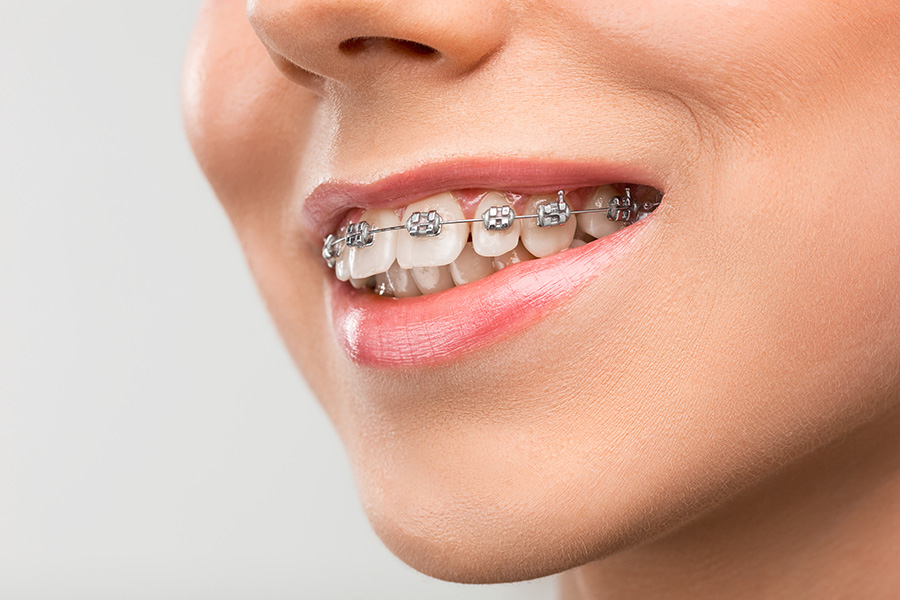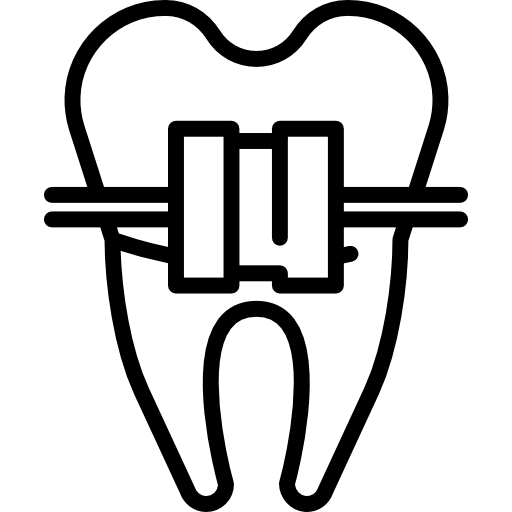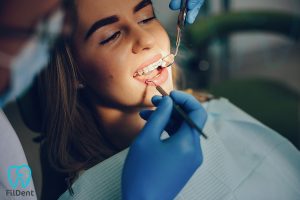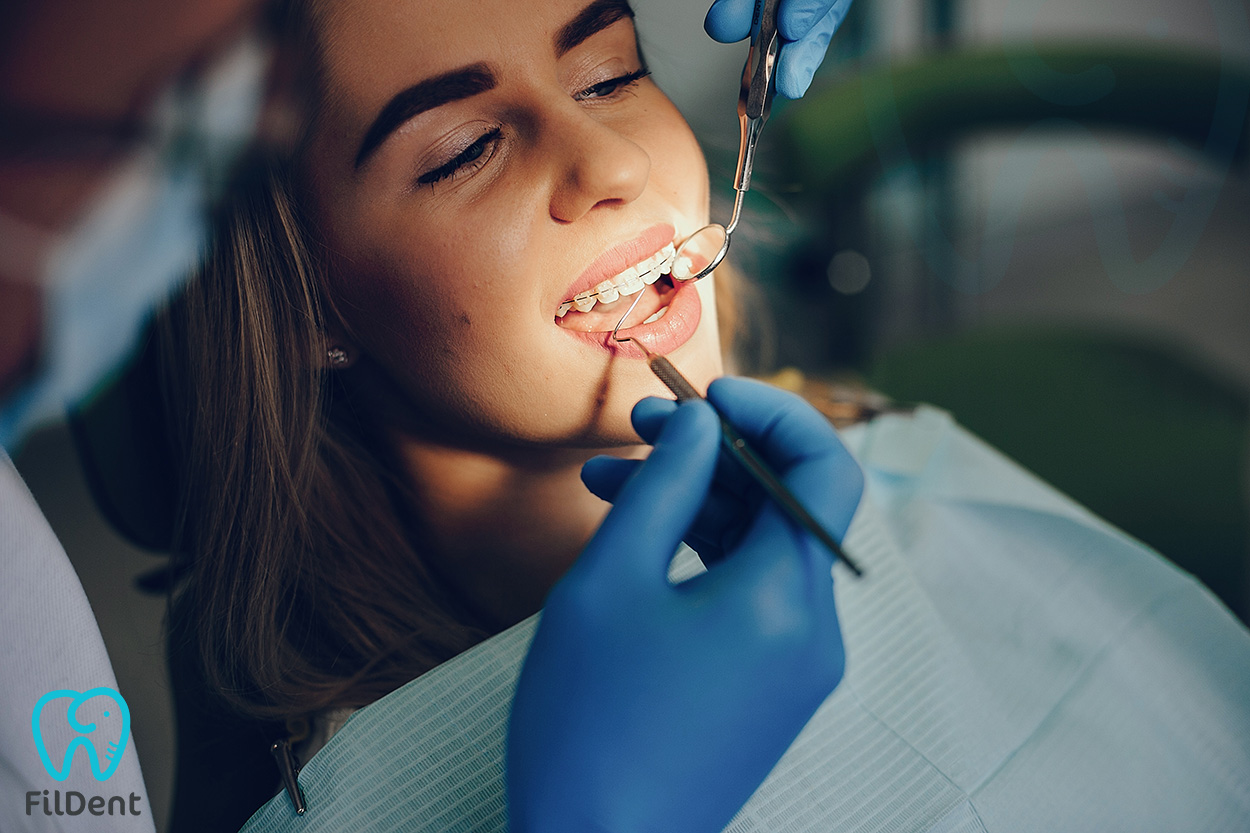

Orthodontics
It is a dental specialty that deals with the correct placement of teeth to the outer bones (alveolar crets) and the diagnosis and treatment of facial irregularities.
What is orthodontics?
If we are to define orthodontics; Orthodontics is a specialty of dentistry that examines the problems related to teeth, the relationship of the jawbones with each other and the skull bones, and diagnoses and treats the issues that may occur in these areas due to any factor.
When should orthodontic treatment be started?
Early diagnosis and treatment are of great importance in Orthodontic treatment. The first orthodontic examination in children should be done around the age of 6-7. Since this period is the period when 6-year-old teeth and incisors in the anterior region begin to erupt, it is important for the early diagnosis of dental problems such as anterior crossbite, teeth protruding forward, and problems related to the jaw. Skeletal problems diagnosed in the early period can be treated more easily and in a short time with simple orthopedic devices. Again in this period, it may cause orthodontic problems with the early diagnosis; bad habits, especially nail-biting, cheek and lip biting; finger sucking, prolonged use of bottles and pacifiers; If problems such as mouth breathing and wrong swallowing are intervened in the early period, the occurrence of anomalies can be prevented.
Can the orthodontic treatment be performed in adults?
 Orthodontic treatment can be applied not only in children and adolescents but also in adults and older ages. The ultimate in orthodontic treatment brings excellent results for adults as well. It is possible to have a healthy mouth structure and a beautiful smile with orthodontic treatment at any age when the gums and bone tissue surrounding the teeth are healthy. Aesthetic anxiety is eliminated in orthodontic treatment in adults with treatment options that are developing and becoming widespread day by day. For individuals who want to be freer in the social and work environment, instead of classical metal brackets, transparent brackets, invisible brackets called ‘Lingual Orthodontic Treatment’ or wireless orthodontic treatment can be applied with transparent plaques.
Orthodontic treatment can be applied not only in children and adolescents but also in adults and older ages. The ultimate in orthodontic treatment brings excellent results for adults as well. It is possible to have a healthy mouth structure and a beautiful smile with orthodontic treatment at any age when the gums and bone tissue surrounding the teeth are healthy. Aesthetic anxiety is eliminated in orthodontic treatment in adults with treatment options that are developing and becoming widespread day by day. For individuals who want to be freer in the social and work environment, instead of classical metal brackets, transparent brackets, invisible brackets called ‘Lingual Orthodontic Treatment’ or wireless orthodontic treatment can be applied with transparent plaques.
Orthodontic What should be considered during treatment?
Success in orthodontic treatment is not only dependent on the physician; it is a process that continues with physician-patient cooperation. Orthodontic treatment is a treatment that requires dedication, patience and discipline.
1. In the first session of orthodontic treatment, it is quite natural to have pain and sensitivity in the teeth after the brackets are attached. Pain occurs due to the tension and pressure that occurs due to the teeth’ movement in the periodontium supporting the teeth. This pain usually starts at the 4th hour after the brackets are attached and force is applied. It reaches its highest level at the 24th hour and decreases to the minimum on the 7th day.
2. Although the felt pain varies depending on the individual’s pain threshold, it can be defined differently by the patients. Pressure, pain, compression and discomfort are expressed in varying degrees depending on the teeth’ movement. Although most patients can tolerate this pain, a pain reliever recommended by your orthodontist can be used in cases where the pain is severe.
3. Care should be taken to use NSAIDs (non-steroidal anti-inflammatory) drugs in pain control during orthodontic treatment. Although these drugs have analgesic and anti-inflammatory effects, they can reduce orthodontic tooth movement. Among the analgesics, only the paracetamol (Parol, Minoset) group has been shown to not affect orthodontic tooth movement speed, so it can be used in mild and moderate pain associated with orthodontic treatment.
4. In the first days of orthodontic treatment, it is quite natural to have irritation on the cheek and lips’ inner surface depending on the brackets attached to the teeth and the braces used. As the tissues tolerate the brackets and wires, it will adapt to this new situation quickly. Gargles and orthodontic waxes will be beneficial for both the healing and relief of these areas for the irritations that may occur in the early stages of treatment.
5. It is quite normal and expected to have a sense of movement, slight swaying and tenderness in the teeth due to the forces applied in the first days of the treatment and monthly controls.
6. Providing oral hygiene throughout the orthodontic treatment period is very important for the progress of the treatment and the maintenance of oral health. In cases where oral hygiene is not provided adequately, and teeth are not brushed regularly, gingival problems such as white leylines defined as the onset of decay around the brackets and gingival redness, swelling and bleeding may occur.
7. In order to maintain oral hygiene in individuals who receive orthodontic treatment, teeth should be brushed for 3-4 minutes at least 3-4 times a day. Orthodontic toothbrushes, interface brushes and mouthwashes for areas that the brush cannot reach will ensure adequate oral hygiene. The point that should not be forgotten here is that brushing is done effectively and insufficient time.
8. Care should be taken not to break the braces during the treatment period. The breakage of the brackets can cause prolongation of the treatment period and damage to the teeth.
Here are the things to be careful not to break the brackets:
• Consumption of hard foods should be avoided during the treatment period. Especially things such as hamburgers, bread pieces of bread, the toast should not be bitten by the front teeth but should be cut into pieces by hand and chewed with the back teeth.
• Hard fruits and vegetables such as apple, pear, quince, carrot should be consumed in thin, small pieces.
• Nuts and shelled foods such as hazelnuts, peanuts, almonds should not be consumed.
• Acidic beverages such as cola, Fanta, soda should not be consumed as much as possible. They both damage the tooth enamel and dissolve the substance used in the brackets’ bonding cause the brackets to break. When it is consumed, care should be taken to consume it by using a straw.
• Sticky foods such as chewing gum, Turkish delight and jelly beans should be consumed as little as possible. They will make cleaning difficult by getting between the brackets and causing the brackets to break.
• Foods with seeds such as olives, plums and grapes should be consumed after their seeds are removed.
Sosyal Medya

